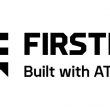LGC Wireless pays $15 million for Alvarion unit
In-building wireless solutions vendor LGC Wireless announced it has closed a deal to pay $15 million for Alvarion’s cellular mobile unit, or CMU, that will let LGC offer in-building systems that utilize readily available IP backhaul.
Alvarion’s CMU was acquired from Interwave Wireless in 2004 and offers in-building systems that combine picocell technology, softswitching and IP backhaul in a package that is only slightly larger than a desktop PC tower, said Ian Sugarbroad, president and CEO of LGC Wireless.
“I think Alvarion is really focused on WiMAX, and I don’t think they could take advantage of and leverage what they had bought — something they realized soon after they bought it,” he said.
In addition to providing in-building coverage, the picocell architecture can be designed to inject additional capacity needed to handle latency-sensitive applications from an array of mobile devices, Sugarbroad said.
While the new unit — to be headed by John O’Connell, formerly the general manager of Nortel Networks’ GSM division — is a “stable business” in its own right at the moment, combining the CMU’s technology with LGC Wireless’ developments can generate new solutions that will lower the cost of in-building solutions by 50% within a year, Sugarbroad said.
Currently, most in-building solutions require operators to backhaul traffic over T-1 links leased from telecom carriers at monthly costs ranging from $400 to $1500 per line, Sugarbroad said. The Alvarion CMU utilizes IP backhaul — something that is readily available at cheaper prices in most enterprises.
“If you can put an IP picocell on the premise, you can backhaul over a DSL link, which is probably $60 per month,” Sugarbroad said. “So, it’s a huge opex savings doing it that way.”
To ensure more consistent in-building coverage, LGC Wireless is developing a “distributed picocell” — a picocell with as many as eight antennas connected with CAT-5 wiring — architecture that will be trialed with carriers during the first quarter of 2007, Sugarbroad said.
“That way, we get the cost-effective IP backhaul, we get the low cost of the picocell, we get the optimized coverage, and we don’t have this problem of doing an RF study for every building we do to work out how to minimize interference with the macro cell sitting outside the door,” he said. “What we’re trying to do is make it so that it is plug-and-play — basically, you plug it in, and it self adjusts.”
Commercially available solutions using this scheme should be available as early as the third quarter of 2007, he said.

















